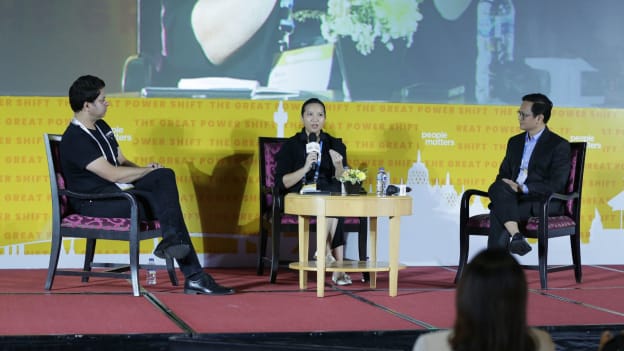Work Around Life Vs Life Around Work: The Changing Rules

68% of employees in Indonesia said they will not opt for higher salaries or job promotions and rather prioritise work-life balance, as per a Michael Page Survey. On the other hand, a lot of people are seen wanting to come back to the office space, and cull out the whiteboard for creativity, shares Randeep Singh, COO of HONO. Given these shifting priorities, how do companies redesign roles, policies, organisation structures to make new rules at work. Randeep believes that organizations need to chart out the way to make the balance work for employer and employee. Let's explore how best employers are tuning into the renewed talent needs and values.
The Power of Choice in EX
Ayu Anditry, Head of People, BukuWarung, believes that the ways of working stem from a cycle, and adjusts to how life is at a particular point in time. “I feel that as life will always evolve, the way companies define work life balance or work life integration for employees, will continue to evolve”, says Ayu. Indeed, during the pandemic, everything went to a work-from-home format to keep everyone safe, but today we are seeing more flexibility wherein people have a choice. Some people want to and can come to office to meet new people, while others who want to be at home can opt for remote or hybrid working. The future is about how companies can personalize and how they profile the choices so that employees feel they have the power of flexibility.
Maris Rahadiyan, Human Resources Director, Cargill believes that organizations need to be careful in managing expectation of employees by first understanding that that there is no one-fit-for-all. HR cannot design one compensation, benefits, policies etc. for the entire employee population; flexible benefits is the way to go to be able to address what is really needed by certain group of employees. But Maris also shares that there is a certain extent up to which companies can provide flexibility. For example, at Cargill, compensation and benefits are created for all group of employee families, but certain employee groups are being given the self-assurance of manual exception in certain cases. Maris shares, “We are creating critical insurance for someone who is having specific ailments. For us, the diversity is such that we can address the needs of the underrepresented group of employees.”
Above all, the top leadership and Board of Directors must want to invest employee budget into something impactful for employees’ welfare. “We don’t want people to think that HR is someone who is having a mere role, we have to have confidence of top management”, says Maris. This indeed, will help HR professionals go back with the spirit of change, and in turn, can enable the great power shift of employee experience.

















